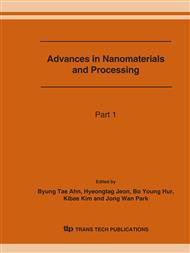p.907
p.911
p.915
p.919
p.923
p.927
p.931
p.935
p.939
Advanced Manufacturing Concepts for Crystalline Silicon Solar Cells: Phosphorous Doping and Contact Opening Process
Abstract:
In this work, we report on the last investigation of POP (selective Phosphorous doping and contact Opening Process) in crystalline silicon solar cells. For the industrial solar cells, it must be very highly doped to decrease the high-contact resistance and not very shallow so that it is not perforated during paste firing, which would short-circuit the junction. We made improvement involves making separate diffusions for the different regions since the requirements are so different: a heavily doped and thick region under the contacts, a thin and lowly doped region under the passivating layer. Furthermore we opened the metal contact area to make a narrow grid lines simultaneously. As a result we could increase fill factor and reduce contact resistance by industrial process.
Info:
Periodical:
Pages:
923-926
Citation:
Online since:
June 2007
Authors:
Keywords:
Price:
Сopyright:
© 2007 Trans Tech Publications Ltd. All Rights Reserved
Share:
Citation:


